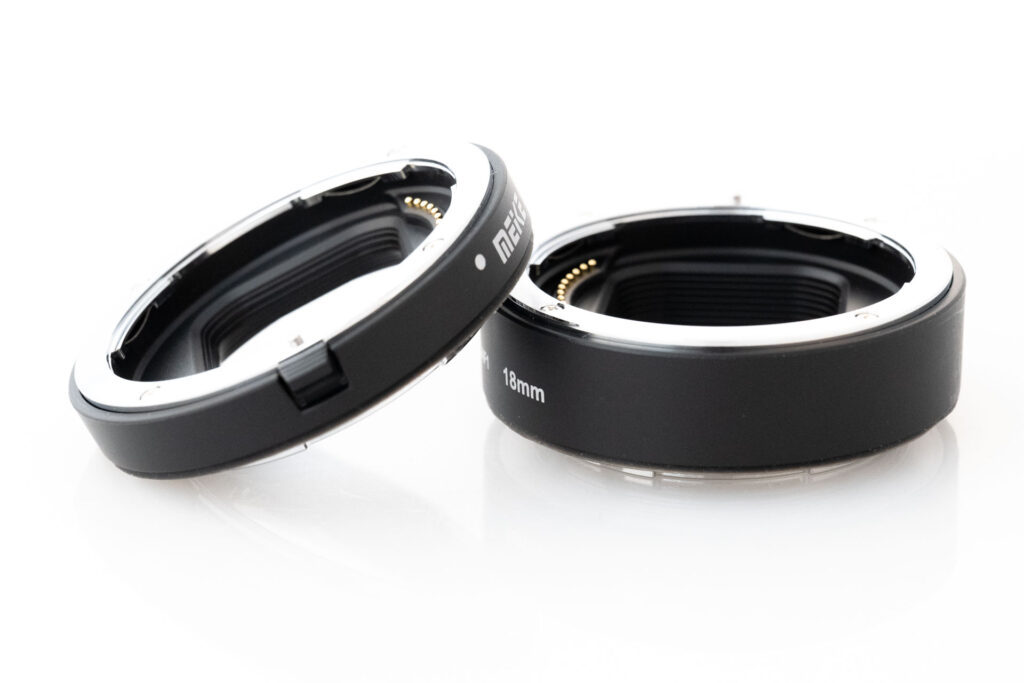Macro Lenses & Three Alternatives:
Shooting macro can be heaps of fun. It can also be expensive, but it doesn’t have to be.
I thought I’d put together a little summary of my own experience with Macro lenses, and why I have ended up on the solutions that I use now.
I’ve used these dedicated Macros:
- Micro-Nikkor 55mm (Ai-s version).
- Micro-Nikkor 60mm (AF version).
- Micro-Nikkor 105mm (Ai-S, AF-D, AF-S and Z versions).
- Micro-Nikkor 70-180mm Zoom (AF-D version).
- Zhongyi Optical Freewalker Super Macro.
Now don’t be worried about the fact that these are mostly Nikkors (except for being a little jealous because Nikon rules! haha). What I am going to say applies to any Brand’s Macro lenses and I hope you can use this as a guide if you’ve never yet bought a dedicated Macro lens but are seriously thinking about it.
Flexible use:
Most Macro lenses, unless otherwise stated, can be used as a regular lens. They are not just for close-ups. In fact, some do quite well as portrait lenses too! Or landscape. Or anything where the focal length meets your needs.
Only the Zhongyi Optical macro lens in my list was macro only, not able to be used as a regular lens. Not recommended either as a tripod and long exposure were necessary for every shot, which I didn’t like.
Magnification Ratio:
The main feature of a true Macro lens is the magnification you get from it. A 1:1 ratio (otherwise known as 1x magnification) means that an object 10mm across will project an image 10mm wide on your sensor. So, by the time you make that final image full-screen on your computer or phone, it looks huge, and you can start to see details in your subject you maybe couldn’t see with the naked eye. Usually, a lens isn’t considered to be a true Macro lens unless it provides a 1:1 ratio (or 1x magnification), but some lenses still labelled “macro” might give 1:2, 1:3 or even 1:4.
Sometimes, you may find a Zoom lens (maybe say a 70-200mm) that says it does “macro focus mode” at one end of the zoom range. That usually means it might hit 1:4 magnification (or even better) but doesn’t hit 1:1, so it’s not a true Macro as such.
Flat Field:
Another key feature of a true macro lens is the flat focus field. This makes it possible to do close-up copy work, like digitising negatives or slides (from the “olden days” of photography), and to ensure you’re able to get the full frame in focus. The “problem” with doing this with a non-macro lens is that the field of focus curves, and especially when close-up like duping negatives, the depth of field is so shallow (even at f/22) that the corners of your negative will not have the same focus point as the middle of the negative, so you always struggle to focus across the whole thing. A flat field lens like a true Macro lens resolves this issue.
The main negative of Macro lenses:
In my opinion is mainly the cost. They are usually more expensive than their non-Macro equivalents.
Another is speed (or light-gathering power). Macro lenses are normally not as ‘fast’ as regular Primes. My fastest Macro is f/2.8, but an f/4 Macro is not uncommon. Yet my fastest regular Prime is f/1.2, f/1.4 or f/1.8, and even most of my zooms are f/2.8.
A Macro lens is also hard to focus. It’s way easier to preset a focus and move your camera backwards and forwards to get focus on your subject than it is to try to change the focus on the lens. Plus, if you do focus using the focusing ring, you change the effective magnification ratio, which might not be desirable. Auto-focusing a true Macro lens is also annoying, so unless I am using the lens for general photography, I usually turn AF off. So maybe that also means that the AF function may not be a required feature if you’re buying one? If that’s the case, then maybe an older (and cheaper) MF Macro lens is all you need.
A Negative of specific focal length Macro lenses is:
The shorter the focal length, the closer you need to be to the subject to get to 1:1 ratio.
So, with a 60mm Macro, you need to be quite a lot closer to the subject than with a 200mm Macro. Now if your subject happens to be some little bug that fears big human monsters, expect the little bug to run (or fly) away when you get too close.
Alternatives to Macro Lenses:
Extension Tubes:
These work exceptionally well at providing Macro ratios like 1:1, but it varies depending on the focal length of the lens. In theory, you can put an extension tube on a lens less than 50mm focal length, but it won’t work well because it will require super-close distances! Not practical in many cases. In fact, on a wide lens like 24mm or less, while you can fit a tube on it, it may not work at all because the back of the lens is moved too far away from the sensor to be able to focus. It’s fun experimenting with this to find out what your setup can do.
So, tubes are best used on lenses from 50mm upward. As your focal length gets longer, the effect of using a tube reduces. The “optimal” lens to put an extension tube on is probably between 50mm and 200mm, but keep reading and you’ll see what I use them on.

Macro Filters (screw-on dioptres):
You can turn your existing regular lens into a Macro lens by adding a glass ‘filter’. It’s not really a filter, but I’m calling it that so you know you would screw it into the front of your lens. It’s another curved glass element (or “dioptre”). I used these when I started off doing Macro photography many years ago and have never done so again because they reduced the resolving ability and image quality too much. But they were reasonably cheap, and they did get my creativity flowing, so that’s not a bad thing.
It may be worth trying Macro Dioptres again today, as optical quality has probably improved, and I probably had the cheaper versions which may have been a major factor.
Reversing Ring:
A reversing ring got me super interested in the technical challenges of Macro. A reversing ring is a metal ring that you screw into the front of your lens like a filter, but on the outside end it has a mounting flange that matches your camera’s lens mount. You can then mount your lens onto your camera back to front! Now depending on the focal length of your lens (which has a dramatic effect on the Macro ratio) you can start exploring Macro photography with any of your existing lenses that the ring will fit on. And with thread adapters, you could try lots of combinations.
One caveat is that you need a lens with mechanical aperture control, otherwise your lens will only operate on one aperture because it won’t be coupled to the camera body. This means you also need to use stop-down metering and shooting processes, which is cumbersome and slow.
What I use:
For all these reasons, here’s what I settled on:
I use mainly 105mm for most Macro work, negative duping, product photos, flowers, and any macro on a tripod with static subjects.
I’ll use a 70-200mm zoom + extension tube(s), or a 180-600mm zoom + extension tube(s) for outdoorsy stuff. Both to leverage the superior AF control that these ‘regular’ lenses offer, and because they give me distance. I don’t generally care about flat focus fields for shooting bugs or critters, so that advantage of a true Macro doesn’t matter to me for those shots.
Those three options cover almost everything.



